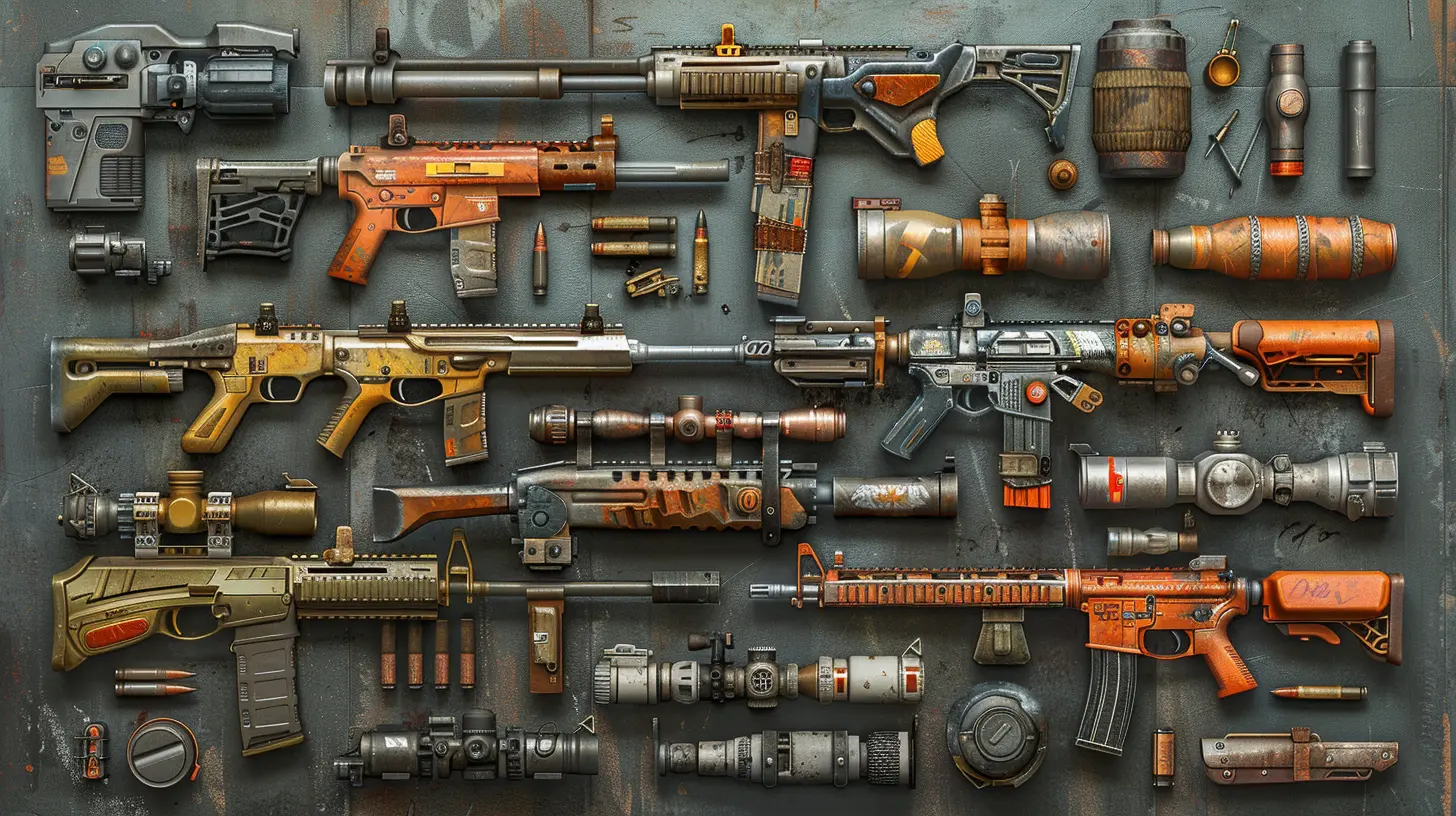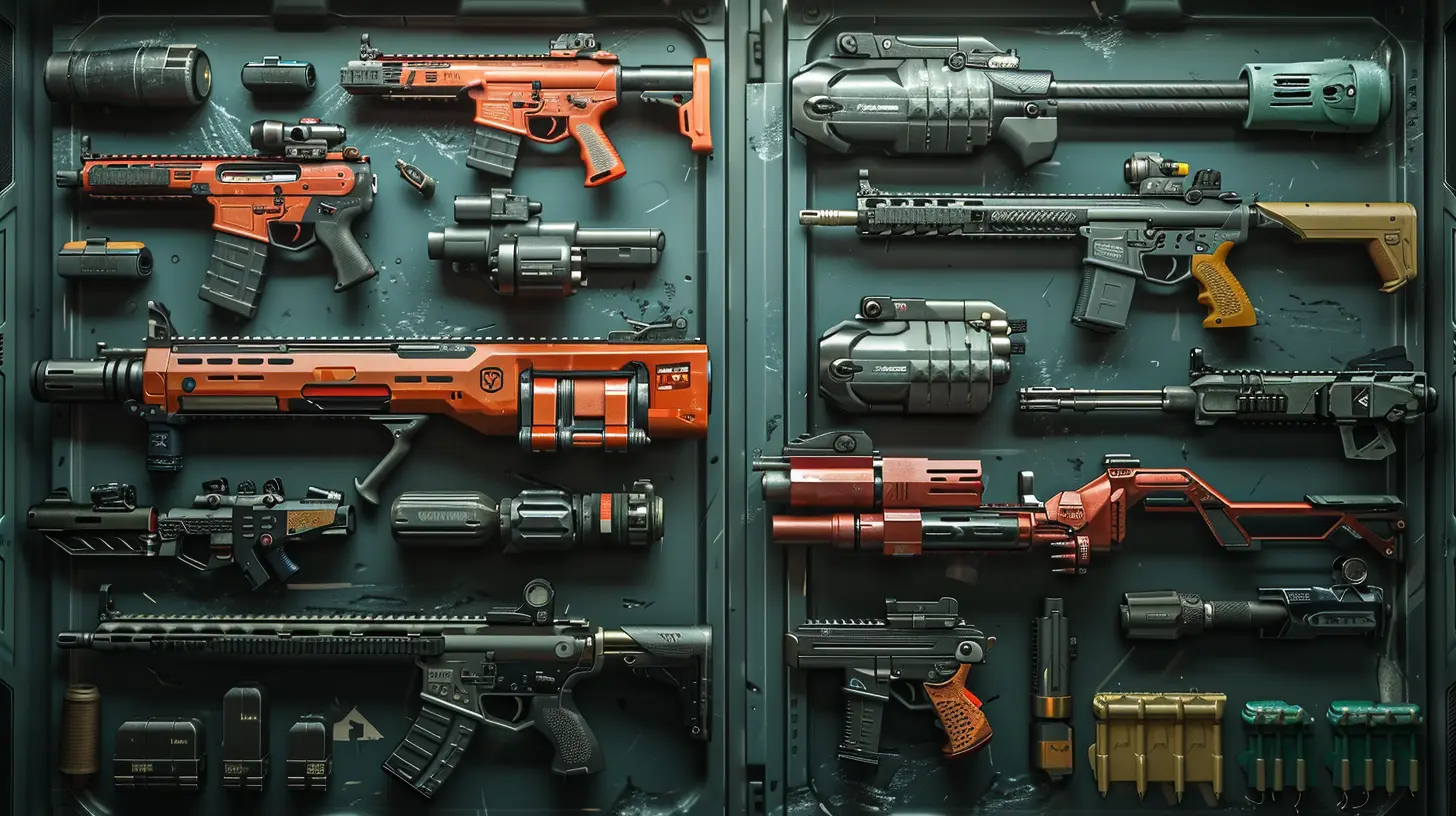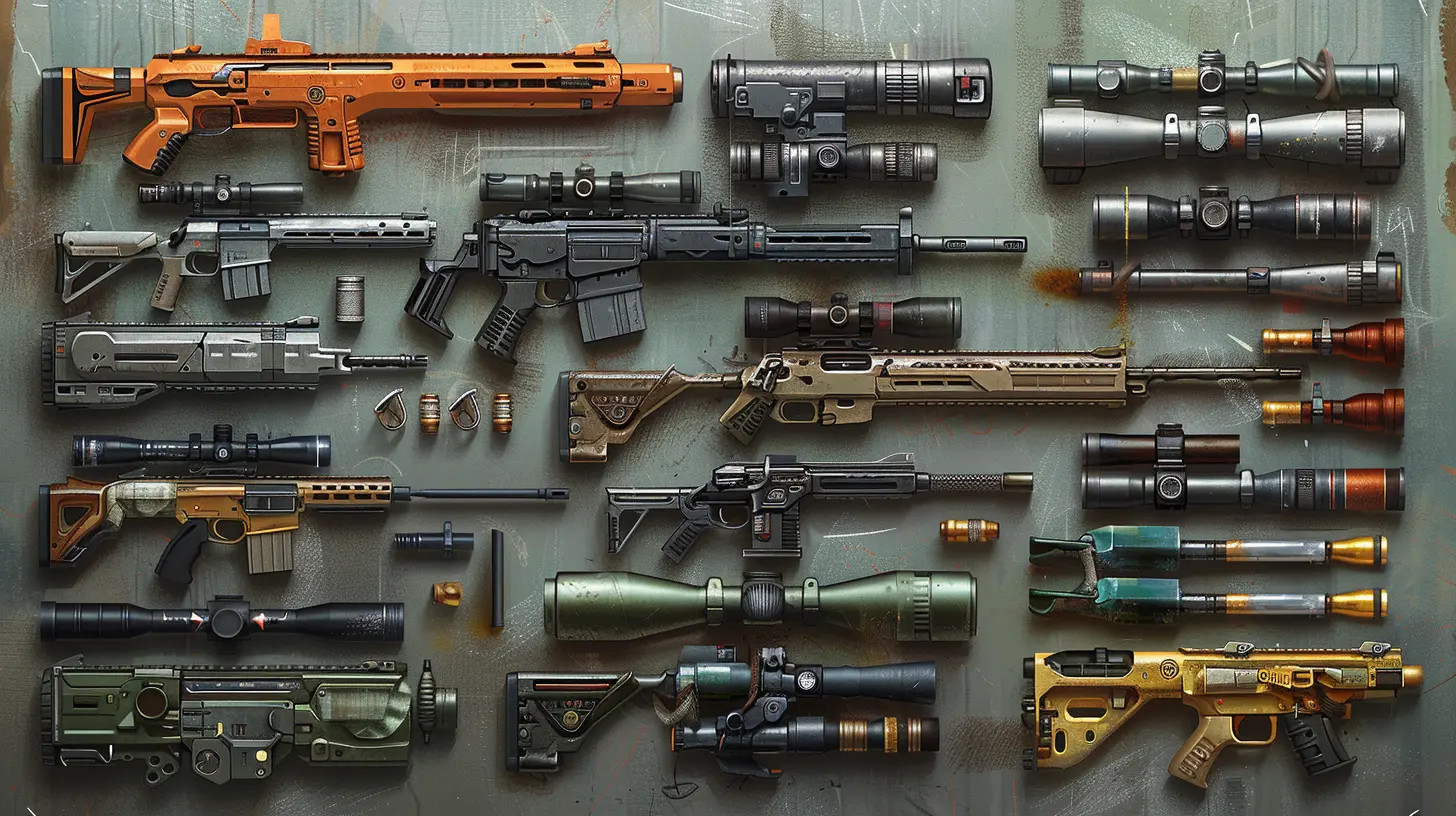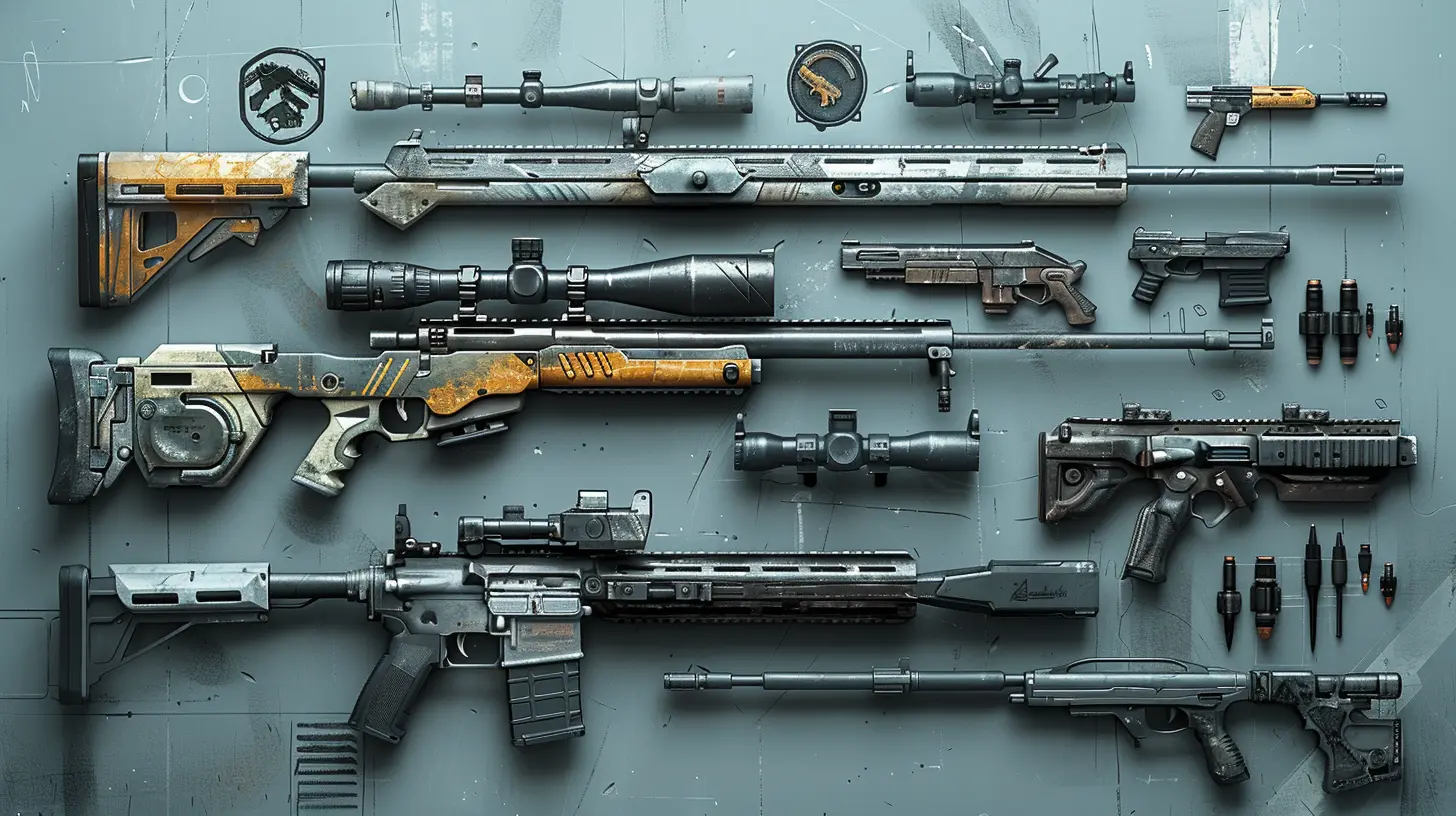From Barrel to Buttstock: The Anatomy of Weapon Customization
12 August 2025
Let’s be honest—we’ve all spent way too much time customizing our weapons instead of actually playing the game. Whether it’s fine-tuning the recoil control, swapping out sights, or deciding if that camo skin really matches your loadout vibes, weapon customization is a rabbit hole many of us happily dive into.
But beneath the surface-level aesthetics and fancy attachments lies a surprisingly deep system. A system that can change how your weapon behaves, feels—and ultimately—performs in the heat of battle.
So, grab your favorite rifle (virtually speaking), and let’s dissect this beast from muzzle to stock. This is your go-to guide for understanding weapon customization. We're talking nitty-gritty mechanics, player choices, and how each swap can turn your nerf gun into a laser beam (well, almost).
What’s Weapon Customization Anyway?
Weapon customization, in gaming terms, is the process of tweaking and upgrading your guns to fit your playstyle. It's a dream come true for every digital operator and sweaty tryhard. You can switch out barrels, grips, optics, and even trigger mechanisms. It’s like turning your standard-issue shooter into your very own Frankenstein firearm—minus the bolts and lightning.In many FPS and tactical shooters like Call of Duty, Battlefield, Escape from Tarkov, and even PUBG, this feature isn't just extra fluff. It’s a full-blown performance enhancer. It can take you from being potato aim to top frag—well, not literally, but it helps.
Why Customization Even Matters
Think of your weapon like a car. Sure, you can drive a stock model off the lot and get from point A to B. But does it handle curves like a dream? Does it make your heart race when you hit that perfect turn? Probably not. Customization is what takes a basic build and makes it yours.Changing one attachment can alter your gun's:
- Damage output
- Accuracy
- Recoil control
- Handling speed
- ADS time (Aim Down Sights)
- Bullet velocity
- Range effectiveness
So yeah, slapping on attachments isn’t just for show. It’s strategy, baby.
The Core Components: Breaking It Down
Okay, time to get our hands oily. Let’s break down the main parts of a weapon that are often customizable in modern games. We’ll walk from the front to the back—barrel to buttstock—just like the title says.1. Barrel – The Business End
The barrel is where the magic starts. In real-world terms, it's responsible for the bullet's path, velocity, and range. In games, changing barrels usually affects:- Accuracy at range
- Recoil direction
- Bullet velocity
- Weapon handling
Longer barrels often increase range and accuracy but slow down your aim speed—think sniper vibes. Shorter barrels give you that snappy, run-and-gun feel but reduce range. It’s all about trade-offs.
Pro Tip: If you’re rocking a tight, indoor map, go short. For wide open fields or long engagements—long barrel all the way.
2. Muzzle – Muzzle Brakes, Compensators & Suppressors
Slap something on the end of your barrel and you’ve suddenly got options. Muzzle attachments are one of the first things players tweak because they affect:- Recoil control
- Flash concealment
- Sound suppression
- Bullet velocity (sometimes)
Suppressors are great for staying off the enemy's radar, but they can lower damage at range. Compensators and muzzle brakes help reduce the vertical and horizontal bounce when firing—basically making full-auto manageable.
Fun Fact: Suppressors aren't silenced whisperers like the movies. They’re more like turning the volume from 11 to 7.
3. Optics – Eyes on the Prize
The choice of optics can literally change the way you see the game. Some people swear by red dots, others won't touch anything below a 4x scope.Here’s what optics affect:
- Target acquisition speed
- Field of view
- Magnification levels
- Peripheral awareness
Red dots are fast and ideal for close quarters. Holographic sights give you clearer sight pictures. Scopes give you magnification but reduce awareness.
Pro Insight: Your aim is only as good as your sightline. Choose what lets you track and snap to targets quickest.
4. Underbarrel Attachments – Grips and More Grips
Underbarrel attachments, like foregrips, provide a massive control benefit. They're not just hunks of plastic hanging underneath the gun—they directly impact:- Recoil stability
- Weapon sway
- ADS speed
- Hip-fire accuracy
Angled grips help you aim quicker, vertical grips help control recoil better, and some hybrids give you a bit of both.
Personal Take: I slap a vertical grip on my LMGs every time. It's the digital duct tape holding the recoil monster down.
5. Ammunition – More Bang for Your Buck
Ah yes, the bullets. Ammo types are often overlooked, but they can drastically alter your gunplay. Depending on the title, you might get:- Armor-piercing rounds
- High-velocity bullets
- Hollow points
- Incendiary (fire rounds!)
Changing your ammo can mean better damage against armored enemies, or faster bullet speed with reduced drop.
Heads-Up: Special ammo often comes with downsides, like reduced mag size or slower reloads. Choose wisely.
6. Magazine – Size, Speed, or Both?
Magazines influence how many rounds you fire before reloading and how fast that reload goes. Some games also let you mod:- Extended mags
- Fast mags
- Drum mags
More bullets = less reloads = more kills (in theory). But extended mags can increase your ADS time and weight.
Rule of Thumb: Fast mags for SMG sprinters; drum mags for LMG campers. Extended mags are the middle ground.
7. Rear Grip – The Hidden MVP
This one doesn’t get enough love. Rear grips are subtle but powerful. They affect:- ADS speed
- Sprint-to-fire time
- Handling in general
Swapping out for a lightweight or textured grip can shave milliseconds off your aim time, which legit makes the difference in close fights.
Real Talk: If you’re quick-scoping or rushing, rear grip upgrades are your BFF.
8. Stock – Butt of the Gun, Top of Your Game
Last but not least—stocks. This is where handling and recoil control come together in harmony (or chaos).Different stocks might:
- Improve stability
- Help with aim walking speed
- Reduce sprint-out times
- Affect flinch resistance
No stock? Super fast but hard to control. Tactical stock? Steady and reliable. There’s even adjustable stocks that offer balance.
Hot Tip: Stocks are where you fine-tune movement and stability. They’re like the suspension system of your battle ride.
Aesthetics vs. Performance: Can You Have Both?
Yes. And no. Most games split cosmetics from performance upgrades. Skins, camos, charms—they’re all fluff, right?Well, not always.
Some games (looking at you, Warzone) have had issues where certain skins literally made characters harder to see. Others use pay-to-win optics that are cleaner than their free counterparts.
Generally though, cosmetics don’t change stats. But they do change confidence—and that’s half the battle.
Loadout Synergy: It’s Not Just the Weapon
What you slap on your gun matters. But don’t forget—loadouts are a package deal. Your weapon customization should complement your perks, field upgrades, and even your movement strategy.Running Ghost & Ninja? Suppressed, mobile builds fit you.
Rocking Overkill with a sniper and AR? Balance range with close-up speed.
Quick Strategy Tip: Customize with intent. Not every attachment needs to be about recoil—some builds are about pushing, holding, or flanking.
Don’t Fall into the Meta Trap
Yeah, the meta builds are powerful. But what’s “meta” today might be nerfed tomorrow. Plus, they may not even suit your playstyle.Instead of copying a YouTuber’s loadout blindly, understand why certain attachments are used. Then tweak them to fit you. Control the gun; don’t let it control you.
Conclusion: Build Your Boomstick, Your Way
Weapon customization is where skills meet style. It’s where personal tastes blend with tactical advantages. And honestly, few things are as satisfying as crafting a gun that not only looks like a beast—but performs like one too.So the next time you're knee-deep in attachment menus, remember—you’re not just modding a weapon. You’re building an extension of your digital self. Make every slot count.
Happy modding, legends.
all images in this post were generated using AI tools
Category:
Weapon CustomizationAuthor:

Stephanie Abbott
Discussion
rate this article
1 comments
Mercy McKee
Great article! Your insights into weapon customization are both informative and engaging. It's fascinating to see how each component influences gameplay and strategy.
August 25, 2025 at 2:45 PM

Stephanie Abbott
Thank you! I'm glad you found the insights engaging. Weapon customization truly adds depth to gameplay and strategy!

